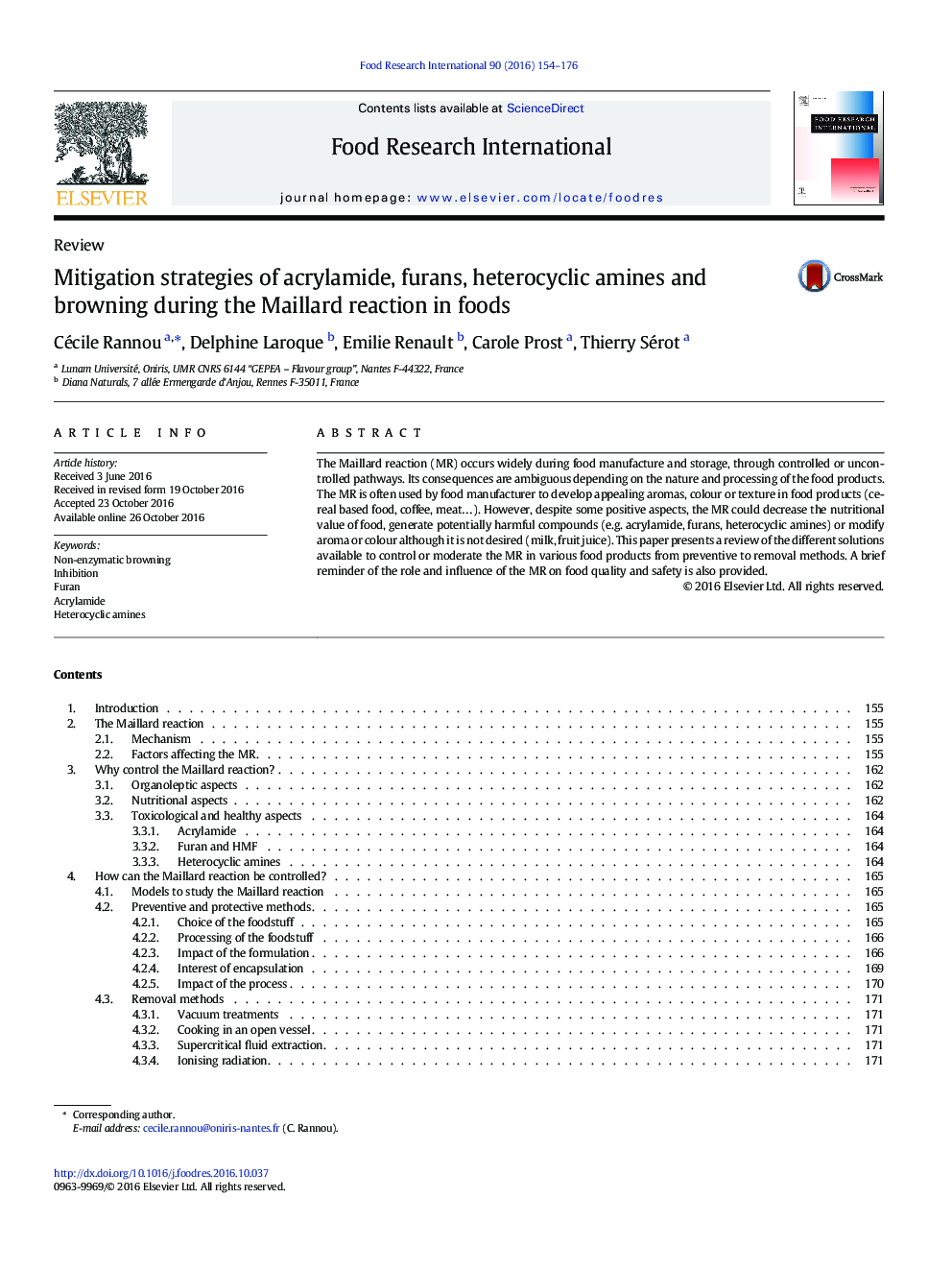| Article ID | Journal | Published Year | Pages | File Type |
|---|---|---|---|---|
| 4561009 | Food Research International | 2016 | 23 Pages |
•The MR could impact aroma, texture, colour or nutritional value of food.•The consequences of the MR could be desired or not in the food product.•Appropriate choice of the raw material, formulation or process could limit the MR.•Addition of chemical or natural products could moderate the MR through various mechanisms.•Undesirable compounds can be removed from food even after they are formed.
The Maillard reaction (MR) occurs widely during food manufacture and storage, through controlled or uncontrolled pathways. Its consequences are ambiguous depending on the nature and processing of the food products. The MR is often used by food manufacturer to develop appealing aromas, colour or texture in food products (cereal based food, coffee, meat…). However, despite some positive aspects, the MR could decrease the nutritional value of food, generate potentially harmful compounds (e.g. acrylamide, furans, heterocyclic amines) or modify aroma or colour although it is not desired (milk, fruit juice). This paper presents a review of the different solutions available to control or moderate the MR in various food products from preventive to removal methods. A brief reminder of the role and influence of the MR on food quality and safety is also provided.
Graphical abstractFigure optionsDownload full-size imageDownload as PowerPoint slide
